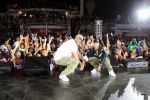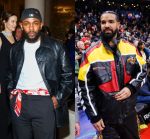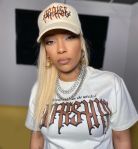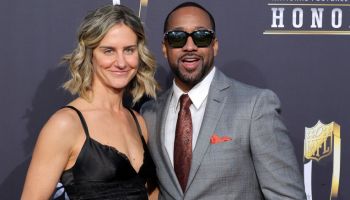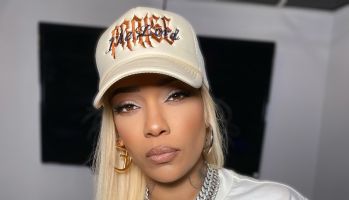ERGUSON, Mo. (AP) — Michael Brown Jr. was on the verge of starting college, eager to launch himself into the adult world. Instead, on Monday he’ll be mourned at his funeral, more than two weeks after his fatal shooting by a white police officer— an act that ignited days of violent protests and reawakened racial tensions that still linger in the nation.
Brown, who was unarmed when he was killed, became an instant symbol of racial injustice as protesters flooded into the streets after his death. Civil rights leaders said the shooting in this predominantly black St. Louis suburb revived long simmering questions about police treatment of minorities across the country.
During more than a week of demonstrations — marred by Molotov cocktails and billowing clouds of tear gas — Brown’s name and face were frequently visible on T-shirts and picket signs. Some also chanted: “I AM MIKE BROWN!”
Even as the details of what happened during the Aug. 9 confrontation remain unclear, a portrait has emerged of the 18-year-old Brown.
Family and friends recall a young man built like a lineman — 6-foot-3, nearly 300 pounds — with a gentle, joking manner. An aspiring rapper who dubbed himself “Big Mike.” A fan of computer games, Lil Wayne, Drake, the movie, “Grown Ups 2” and the TV show “Family Guy.” A kid who was good at fixing things. A struggling student who buckled down to finish his courses, don his green graduation gown with red sash and cross the stage in August to pick up his diploma.
“My fondest memory of Mike is seeing a big kid coming in with a smile on his face, his headphones on and a big can of iced tea … and say, ‘Hey, Coach K, What’s going on? …. What do you need me to do this morning?'” recalls Charlie Kennedy, a Normandy High School health and physical education teacher. He says Brown was the kind of kid who’d hold court with “four or five kids around him, cutting up and having a good time.”
Kennedy became acquainted with Brown while running a credit recovery program the young man was enrolled in that allowed him to catch up so he could graduate with his class. Brown, he says, could be led astray by kids who were bad influences but by spring, he became focused on getting his degree.
Kennedy also would bring in recording equipment Brown could use for rapping — he wanted to perform and learn a trade to help support himself. “His biggest goal was to be part of something,” the teacher adds. “He didn’t like not knowing where to fit in life. … He was kind-hearted, a little kid in a big body. He was intimidating looking, but I don’t think he ever was disrespectful to me.”
Brown loved music even as a young child. Ophelia Troupe, his art teacher for five years in elementary school, remembers a reserved, polite boy — he’d always respond “yes ma’am” or “no ma’am.” He kept to himself but lit up when she’d play her son’s beats — which make up the backbone of hip-hop and rap songs — in class as a reward if the students behaved.
“Michael was the one to say, “Be quiet so Ms. Troupe can play the beats,'” she recalls.
Troupe hadn’t seen Brown for years until they crossed paths at his high school graduation. After the ceremony, they hugged and he told her he’d like to be a rapper and asked if her son would work with him.
Slightly more than a week later, Brown was shot while walking down the street with a friend. Police have said a scuffle broke out with Officer Darren Wilson after he asked the two to move and that Wilson was pushed into his squad car and physically assaulted. Some witnesses have reported seeing Brown’s arms in the air — an act of surrender. An autopsy concluded he’d been shot at least six times.

